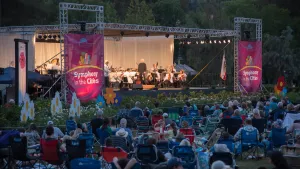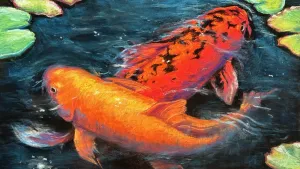Arts & Culture Newsletter
Shakespeare by the Sea

Enjoy an enchanting evening under the stars with Shakespeare by the Sea’s new adaptation of both parts of Shakespeare’s “Henry IV” – “Henry IV: Falstaff and the Boy Who Would be King.” The Friday, July 26 performance begins at 7 pm on the Village Green near the Norman P. Murray Community Center at 24932 Veterans Way.
Bring your picnics, blankets and beach chairs along with your friends and family to settle in for a night of classic entertainment.
This free performance is open to all.
Adirondack chairs are available to rent for $10 and will be placed for you to savor a relaxing evening of theater under the stars. These seats sell out quickly! Reserve your chair today by clicking here.
For more information, contact arts@cityofmissionviejo.org or 949-470-8470.
Symphony in the Cities and Prelude in the Park

Mark your calendars for an out-of-this-world event! Symphony in the Cities and Prelude in the Park begins at 4 pm on Saturday, August 3 at Oso Viejo Community Park, 24932 Veterans Way.
Guests of all ages can savor delicious food from various food trucks; delight in live music led by the renowned Music Director Carl St.Clair and Pacific Symphony; play games with friends and family; and explore community booths for additional entertainment. Wine and beer will be available for purchase.
Guests can set up blankets and chairs beginning at 1 pm. The free event takes place from 4 to 8:30 pm. To ease parking, a shuttle service is provided from the Civic Center to the Village Green.
For more information, email arts@cityofmissionviejo.org.
What's hot at the Potocki this summer

This summer is heating up with more new classes at the Potocki Center for the Arts. Enjoy chalk pastels, voice classes, and oil painting just to name a few. You will also find your usual favorites like acting, candle crafting and ceramics. Beat the summer heat with a cool art class at the Potocki Center for the Arts..
Register for our spring classes by clicking here.
Potocki Center for the Arts is located at 27301 La Paz Road.
For more information, contact 949-470-8470 or arts@cityofmissionviejo.org.
Art instructor spotlight on Tanya Anticevic

Acting classes are an exciting new addition to the lineup of classes at the Potocki Center. Instructor Tanya Anticevic earned her MFA in acting from the Actors Studio drama school. She taught at The Lee Strasberg Theatre & Film Institute in Los Angeles and now teaches teens and adults to explore their acting abilities.
“Acting Technique” begins on June 6 from 6-8 pm. To register, visit this link.
We interviewed Tanya so you can learn more about this new instructor:
Q: How did you get started in acting?
A: As a kid growing up in New York City, I was surrounded by premier performing arts experiences and was bitten by the acting bug at age 7. I starred in my school plays and begged my mom to take me to commercial auditions. I attended the “Fame” High School of Performing Arts, performed in “West Side Story” at a beautiful old theatre and was hooked forever.
Q: What is your favorite thing about teaching acting classes?
A: I absolutely love witnessing breakthroughs, triumphs, awakenings, and joy in my students. It really can be fun and freeing. Seeing their vulnerability, honesty, humanity, and talent shine is intensely moving. Being an acting teacher is really part life coach and part drama therapist. It is a profession that is profoundly rewarding.
Q: How do you like to spend your time when you're not working?
A: I believe that I should practice what I preach (as much as possible) and take a holistic approach to time off work. I take care of my mental and physical health as a priority. I swim, hike, paint, do crafts, and meditate. I am also a big TV and movie buff!
Q: What advice do you have for people who hesitate to try acting?
A: Try it – overcome that fear. Courage comes from doing the thing that scares you most. We only regret the things we didn’t do. You might discover that pursuing a career as an actor is not for you. However, you will always walk away from acting classes with a better understanding of you, your relationships, and the world around you. It’s a win-win. (You will probably have a whole new outlook on those actors who make it look so easy. But if it were easy, everyone would do it.) Dare to try something different!



